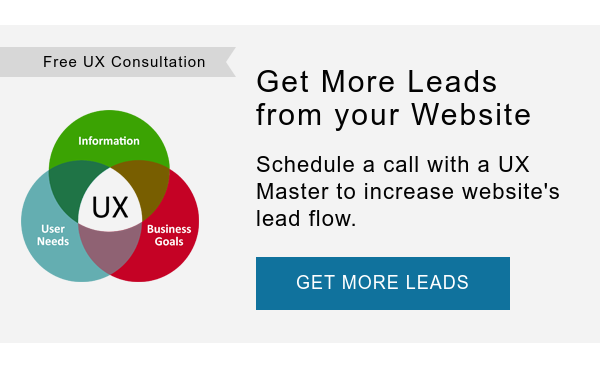One of the most persistent challenges facing organizations doing business online is how to attract the attention of, engage, and delight your audience in the few short seconds you have their notice. In 2000 the average human attention span was about 12 seconds long. By 2013 this had decreased to 8 seconds, and it has continued to fall since. When you consider that the average attention span of a goldfish is about 9 seconds, this trend is hardly encouraging for marketers.
This is likely due to information overload. We are bombarded with an ever-growing stream of information, and multiple platforms and channels have evolved that help us process this data ever more quickly and painlessly. Wasting time on information processing has become an annoyance – our cognitive ability is limited and we dislike expending it on information of no value.
Consequently, our brains are evolving to ‘tune out’ inputs that do not meet this standard. This is evidenced by phenomenon such as banner blindness, where people actively make an effort to ignore advertising they view while browsing online.
At Intechnic, we take this concept a step further and design for a 5 second attention span. There are no signs of this trend abating in the near future; Generation Z’s attention span is even shorter than that of Millennials. This helps us future-proof our work and ensures that it will be effective as demographics evolve over time.
In 2000 the average human attention span was about 12 seconds long. By 2013 this had decreased to 8 seconds, and it has continued to fall since.
Understanding how the human mind works and how to attract and hold the attention of your audience will enable you to create user experiences that out-perform the competition and please your users at the same time. You can empower them to get access to the information they need quickly and easily and ultimately complete their tasks with as little wasted time as possible.
Now let’s take a look at some specific techniques that use knowledge of how the mind works in order to grab people’s attention and hold it long enough to deliver your message:
1. Capture the Eyes of Your Audience
A good way to think of attention is like it was a currency. People value their time and cognitive power, and are stingy about spending it on low-value information. In order to motivate them to spend their attention on your message, you need to understand how to generate that initial spark of interest.
Movement & Animations
One of the most effective techniques for doing this is incorporating movement into your designs, such as animation. This reason this works is because of peripheral vision. We evolved this ability to help us scan our environment for potential dangers, and consequently our eyes and attention are powerfully drawn to movement.
Human Faces
Another good technique is incorporating human faces into your content – particularly those which look directly at the viewer. We have also evolved to recognize the faces of other people, which instantly draw and hold our attention. Check out our full article on How Human Faces Affect User Experience in Web Design for more information.

Bolding & Colors
You can also consider specific colors for particular parts of your messaging; your calls-to-action can really be made to stand out by using especially vivid coloring. Even manipulation of the text itself is fair game. Simply bolding specific information will make it stand out to readers, as illustrated by this paragraph.
Squint Test
There are simpler visual techniques for grabbing attention as well, such as the use of bright colors, large images, and other elements which really pop out to the viewer. One quick test you can perform on your content is the squint test. To do this simply view your pages normally, then squint your eyes until you can no longer make out the text itself. This should cause the elements which visually stand out to really pop, making them easily recognizable for you.
The biggest takeaway from all this is that people are really only able to pay attention to and process one singular piece of information at a time. They will often scan their environment until something grabs their attention. These techniques are designed to activate those impulses, enabling you to capture and direct their attention in a specific fashion.
2. Tap Into Primal Urges
In a very real sense, the so-called ‘reptile’ portion of your brain has evolved to perform one very specific function. That being to constantly scan your environment and evaluate everything you see as to its potential as a food source, mate, or potential danger. Can you eat it? Can you mate with it? Can it kill you? Answering these questions is the full-time job of a substantial portion of your unconscious mind, and tapping into these instincts can be a powerful method of gaining instant attention.
Food
Delicious food imagery can activate these impulses – have you ever seen a restaurant ad that literally left your mouth watering? These types of ads help us associate positive experiences with these products, and can be extraordinarily powerful.
Sex
Some of the best-known techniques used by ads that tap into these primal urges are images of attractive people of the opposite sex (see every beer commercial ever).
Danger
Danger is another powerful, primal impulse which can be used to capture peoples’ attention. The danger need not be physical or immediate in nature; you will frequently see this technique used to engage people through hypothetical examples or reverse psychology. Put simply, the shock factor works wonders when it comes to engaging the primal response to danger.

However, not all businesses are able to leverage these primal urges effectively. In some contexts, they simply aren’t appropriate, and in others they don’t make much sense. Business in the Food, Entertainment, Hospitality, Tourism, or Travel niches should be able to easily find ways to use these techniques. Those selling office products or accounting services may have a more difficult time of it. Ultimately, just be mindful of the products you are selling as well as your target demographics, and only use these powerful techniques when it makes sense given your audience.
3. Harness the Power of Emotion & Storytelling
Another very effective technique for capturing attention is by creating emotions in your audience. By evoking emotions, you open the minds of your audience, and engage their willingness to explore and learn.
This technique works equally well with both positive and negative emotional responses. By creating positive emotions in your audience, you place them in a receptive state where they are likely to pay attention and create positive mental associations with your product. By using negative emotions, you can tap into the primal urges discussed earlier, also engaging their attention.
Emotion Motivates Action
One of the best ways to create powerful emotional responses is through the use of imaging and visuals. Every aspect of these visuals can be tweaked to produce the desired effect, from the subject, to the tone and mood, and even the color scheme. All of these elements are important to the final ‘framing’, or mindset, the image is intended to produce.
Capture attention by using images and copy to trigger emotional responses.
Incorporate as Many Senses as Possible
Video has the potential to be even more powerful than still imagery. All videos incorporate motion, which naturally captures the human eye as discussed above. Additionally, you can leverage the power of music, sound, and voice to produce additional layers of emotional response still imagery cannot reproduce. The more sensory inputs you can work with, the greater the potential for creating deeper emotional states in your audience.
People Follow Narratives
Storytelling is another technique you should utilize. It dovetails closely with evoking emotion. In one sense, images and videos are primitive stories; what makes them truly engaging is the total narrative they create in your mind rather than the individual components of the visual. Apply this same thinking to your digital communications. It should tell its own story, clearly and consistently across the multiple channels you use to communicate with your audience.
4. Provide Your Audience Salient Information
People only pay real attention to salient cues, while disregarding substantial amounts of information regarded as trivial. . How do you identify which type to purchase? If you’re like most people, you rely on some of the more obvious and contrasting characteristics of the packaging, such as its size or color, rather than the actual words on the boxes. In fact, it is highly likely that you cannot even recall most of the words on your toothpaste packaging, despite having seen dozens or hundreds of tubes of the stuff. People simply do not pay attention to information irrelevant to them.
Include only the most important information in your messaging. Don’t overload your audience with trivial details!
Instead, they reserve their cognitive ability for topics actually important to them. For marketers, this leads to one inescapable conclusion: you need to do research. Understanding your end user, who they are, and their pain points is what enables you to create salient cues to use when designing your user experience. These cues will actually resonate with them, triggering them to pay close attention rather than dismissing your message as trivial, unimportant background noise. You can begin this process through the creation of buyer personas. It is important to later follow up this process with
Once you have a full understanding of what cues will prove salient to your audience, here are four specific techniques you can use to create them:
- Understanding & Empathy – Using the right terminology and language for your audience demonstrates that you understand where they are coming from. Empathy is a powerful technique which produces positive feelings in your audience.
- Demonstrating Expertise – Truly understand the pain points of your audience, and clearly explain how your solution addresses the situation and your audience will recognize the value.
- Listening & Feedback – Always communicate that your organization is open to conversation and feedback of all sorts. Be willing to learn about their specific situation and honest about how you can potentially help.
- Be Relatable – Finally, try to ensure all your messaging is relatable to your audience. People are far more likely to pay attention to relatable messages, because they matter more to them.
Unfortunately, salient cues by themselves are not usually enough to capture attention. The cues are really only the pieces of information that you know your audience will find most important; there is nothing inherently attention-grabbing about them.
That means for best results, you typically want to combine salient cues with the techniques we discussed earlier - movement, faces, colors, primal urges, etc., to actually intrigue them. Identify the salient cues, then use the other psychological techniques to really make them stand out in the minds of your audience.
5. Leverage the Power of Contrast
Demonstrating contrast is another effective technique for capturing attention. If you’ve ever seen any weight loss or fitness ads featuring ‘Before’ and ‘After’ shots, you have seen the principle of contrast at work.
Other popular formulations of the concept include comparing ‘Good’ and ‘Bad’, ‘Do’s’ versus ‘Don’t’s’, ‘Risky’ versus ‘Safe’ or similar formulations. Basically anything that lets you compare and contrast polar opposites will work.
Use contrasts like “Good and Bad” and “Before and After.”
The reason contrast is such a powerful concept again relies on the evolutionary paths our brains have taken. Much like the eye is naturally drawn to movement, the mind naturally pays more attention to things which are in contrast with either their environment, or to information previously presented.
As we have discussed previously, people want to make good decisions, avoid bad decisions, and see progress moving forward; utilizing the power of comparison through contrast can help to create a powerful story that will resonate with your audience.
Helping Your Audience Help Themselves
The most important element in capturing people’s attention is ensuring that the information you are trying to present them is of real and honest value. Once you have ensured that you can pass that salience test, then you can deploy some of the additional techniques we have discussed to put emphasis on it and really make it stand out.
Users will appreciate this approach, because it delivers a positive experience for them. You’ve got information that is important to them, you make it easy for them to find, and you empower them to get their business done with minimal hassle.
What they don’t like is being tricked or manipulated; if you use these techniques to direct people towards information they do not value, they will fight back against this negative user experience by tuning out your message entirely. There is no faster path to losing your credibility and trust than this.
However, no matter how successful you are in capturing the initial interest of your audience that is only half the battle you face. In Part II of this series we will investigate specific techniques that can be used to keep your audience focused on your messaging and boost their attention span.
Next post: How to Keep Users Focused and Increase Their Attention Spans



